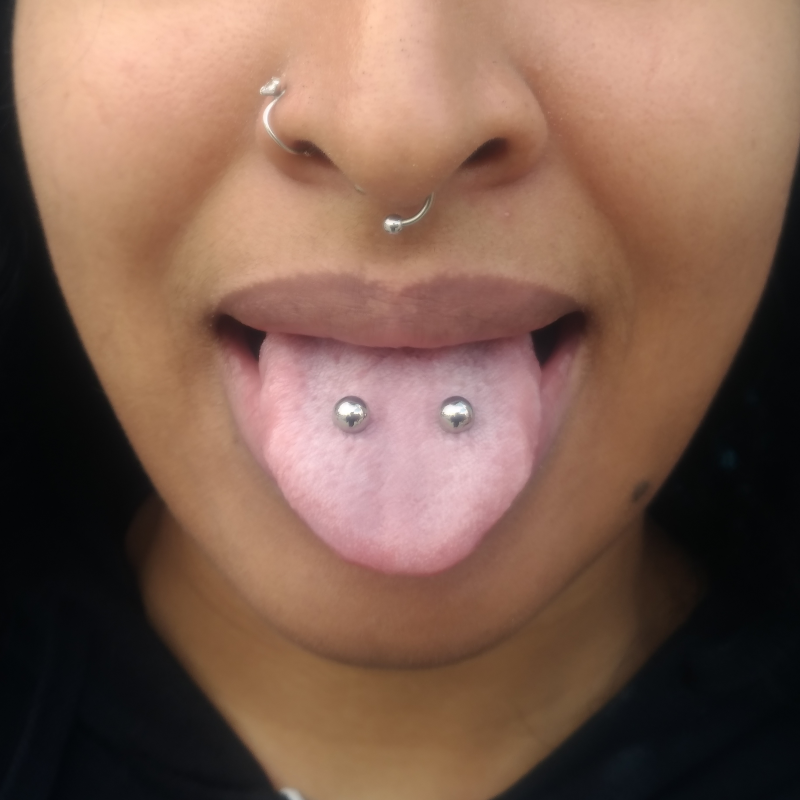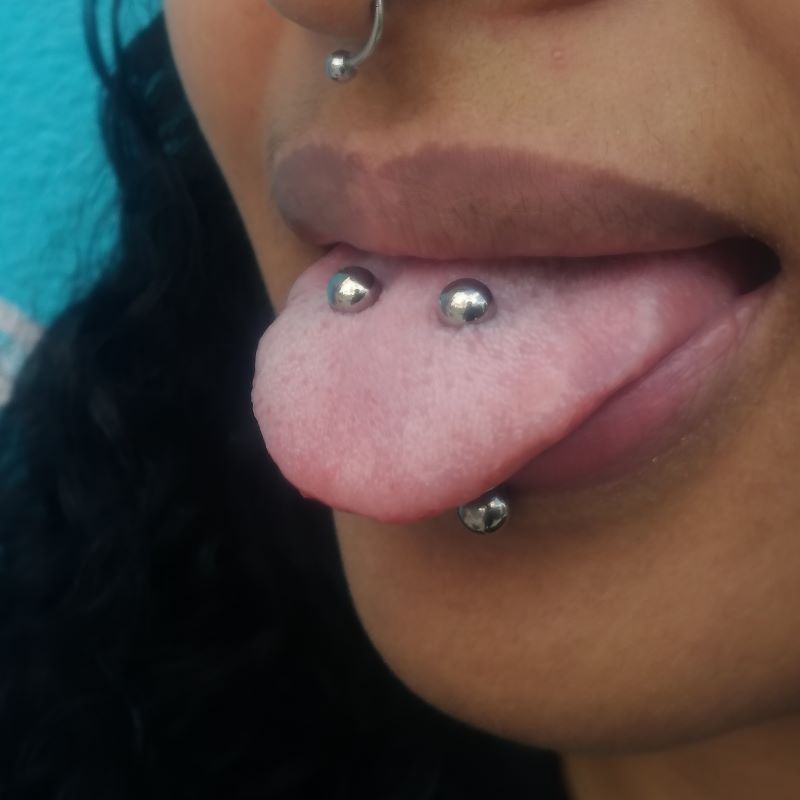You’ve probably seen those tiny, shiny beads sitting right at the tip of someone’s tongue and thought, “Ooh, that looks cool!” That’s called a horizontal tongue piercing (also known as a snake eyes or scoop piercing). While the look is definitely eye-catching and unique, there’s an important reason why I choose not to offer them.
Here’s the real tea: Horizontal tongue piercings come with a laundry list of serious risks. We’re talking gum recession, chipped teeth, and even speech issues like lisps. That’s why I don’t offer them. The risks are just too high for something that sits in such a sensitive and functional area of your body.


Let’s break it down. When your mouth is closed, the tip of your tongue naturally rests against the back of your front teeth. Now imagine putting a piece of metal right there. Over time, that constant pressure can wear away at your gums—and once your gum tissue is gone, it doesn’t grow back. That same jewelry can also tap or grind against your teeth when you talk, potentially causing chips or cracks. Add to that the fact that the tongue is made up of two muscles that need to move independently—and this type of piercing can bind them together, messing with how you speak, chew, and swallow.
But if you love the look, you’re in luck! You can still choose a similar option, safely. A pair of vertical tongue piercings (one on each side of the tongue) gives you that bold, eye-catching aesthetic—without the long-term damage. Because they’re placed vertically, they don’t press into your gums or tap your teeth. And bonus: they’re done with straight barbells, so your jewelry options are way more versatile than the curved bars used in horizontal placements.


A classic tongue piercing (even doubles) are carefully placed to avoid contact with your teeth and gums. The same goes for lip piercings like monroes, labrets, philtrums, and even cheek piercings. Placement is carefully planned around your specific anatomical structure, and once healed, they’re typically fitted with a shorter wear surface and low-profile, flat backs that minimize any rubbing or irritation.
In most cases, the complications from horizontal tongue piercings develop quietly and aren’t identified until significant damage has occurred. Gum recession and other dental issues often go unnoticed until it’s too late. I’ve seen clients come in after dental checkups needing serious (and expensive) work, only to find out their piercing was the root cause.
Some shops unfortunately continue this offering; the reason being, the piercing industry isn’t as regulated as it should be. There’s no strict set of guidelines outlining what’s to risky or unsafe, and not every piercer makes the effort to stay well-informed. Some may simply be unaware, while others may not prioritize your safety. As for me, I don’t perform piercings with a high chance of failure. My focus is on providing clean, safe, and beautiful work that heals properly and looks fantastic over time.
If you’re ever unsure about a piercing, I always encourage clients to ask questions. A responsible piercer will never pressure you into something risky and should always be honest about potential downsides.
